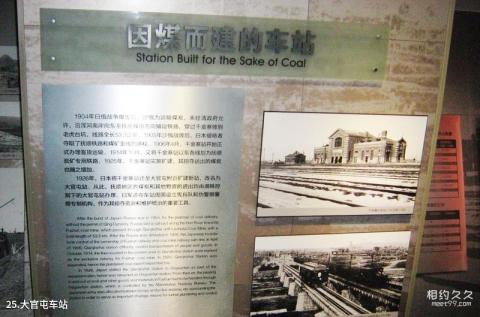
Introduction to Daguantun Station: In 1904, in order to transport coal, Tsarist Russia, without the permission of the Qing government, branched off from the South Manchuria Railway branch near the Hun River north of Sujiatun Station, and headed east along the south bank of the Hun River to A railway is being laid in the direction of the Fushun Coalfield, passing through Qianjinzhai to Laohutai Mine, with a total length of 53.3 kilometers. After the defeat of Tsarist Russia in 1905, Japanese invaders entered the Qianjinzhai area of Fushun and seized the right of way for the Fushun Railway and Coal Mine Branch. In April 1906, Qianjinzhai Station began to officially handle passenger and cargo transportation. In October 1914, Japan designated the lines east of Qianjinzhai Station as Fushun Coal Mine-specific railways. In 1925, Japan began to expand the Qianjinzhai Station. Since then, as Japan's aggressive power has continued to expand, the amount of coal it plundered and shipped has also continued to increase. In 1926, Japan moved Qianjinzhai Station to a new station near Daguantun and renamed it Daguantun Station. From then on, the entry and exit of coal and other materials in Fushun area were handled by Daguantun Station under the control of Manchurian Railway. In order to control the public security in the Daguantun station area, the Japanese army also set up autocratic agencies such as the gendarmerie and the pseudo-police station around the station as important tools for plundering resources and maintaining rule.
